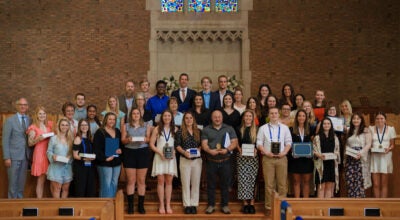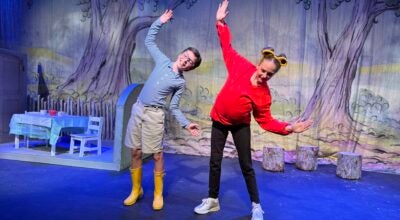Published 12:00 am Wednesday, July 25, 2012
By Juanita Teschner
Catawba College Center for the Environment
Two summer interns from Duke University completed their work at the Center for the Environment at Catawba College on July 20. Both recipients of Stanback Internships, they have focused on planning, promoting and helping to orchestrate major events offered by the center.
Tom Atwood, who has worked three years for Sustainable Duke, has done extensive research and planning for a faith workshop on environmental stewardship to be held in November, as well as helping to plan and host the National Environmental Summit for High School Students, held July 9-14.
Lexi Wallace, a rising senior environmental science and policy major at Duke, worked on the promotion, planning and facilitation of the National Summit.
Atwood has gathered information on what faith communities primarily in Salisbury — but also in Concord, Charlotte and Greensboro — have done to advance environmental stewardship; what the congregations would like to learn more about; and what resources they have used which would be helpful to other faith communities that want to become better stewards.
Atwood, a Duke University senior from Connecticut who is majoring in economics, and others on the planning team are basing the design of the workshop on that research. The workshop will likely focus on two distinct areas:
• Facilitating sessions which allow participants to share ways their congregations have become better stewards of the environment, focusing particularly on challenges they had to overcome and best practices they developed;
• Helping participants develop a specific plan for their particular faith community which will further advance their stewardship activities.
“This has been a really awesome experience just getting to meet people and hear their stories and learn how they look at the environmental stewardship issue,” Atwood says. “It really is amazing how many different perspectives there are and how they all end up leading people to the same conclusion, which is that we need to care about environmental stewardship.”
Some approach the subject from a financial perspective, intent on using their congregations’ funds efficiently, Atwood says, and others approach it more from an environmental standpoint, noting that we need to protect nature for its own sake.
The internship has helped Atwood make connections between faith perspectives and actions that advance stewardship. It has also connected him with people who share his dedication to the environment.
Learning about the steps that move congregants from a scriptural foundation or a sense of duty to action has been enlightening. “I’ve learned a lot about what those connections can look like and how they’re made and how to get others to make those connections, too,” he says. “I have come to new understandings and have a better appreciation for how important this subject is.”
Wallace, a native of Phoenix, Ariz., worked in May and June on recruitment and marketing for the National Environmental Summit, focusing especially on Facebook and the summit webpage on the center’s website. She and Atwood were integral members of the summit team that planned and orchestrated a three-part workshop series on planning, communicating and mobilizing an initiative.
“We wanted the students to be equipped with the skills necessary to go back home and start a project at their school or in their community,” she says.
Ben Prater, a Catawba graduate and assistant executive director of Wild South, and Amanda Lanier, the center’s programming coordinator, conducted the first two workshops, and Wallace and Atwood led the third. “Tom’s and my workshop was on mobilizing the initiative: Now that you have your plan and you have communicated it to others, it’s time to put it into action,” Wallace says. “We talked about things like forming a team, finding resources for your project, being a team leader and what you need to do to implement your initiative.”
Each student completed a student action plan which mapped out a proposal for a project they could work on when they returned home. “They had to think about the problem they were trying to address, the solution they wanted to propose, their goals, who would be on their team and where they could most effectively communicate this,” Wallace says. They also did a timeline with dates for completing tasks.
During the summit, Wallace wore multiple hats, facilitating various programs, working with the counselors and co-leading the workshop. “I actually got to be involved in a lot of the really cool parts of the summit,” she says. “Leading the workshop was awesome.”
She got a lot of satisfaction watching all the planning come to fruition. “To see the students actually here on campus learning and exploring and engaging with all the materials made it all so worthwhile,” she says. “I’m excited to see what those students do in the future.”
Wallace obviously enjoyed her internship. “The people at the Center for the Environment also really made it worth it,” she says. “They are all so kind and welcoming and helpful. I really enjoyed my time this summer.”



